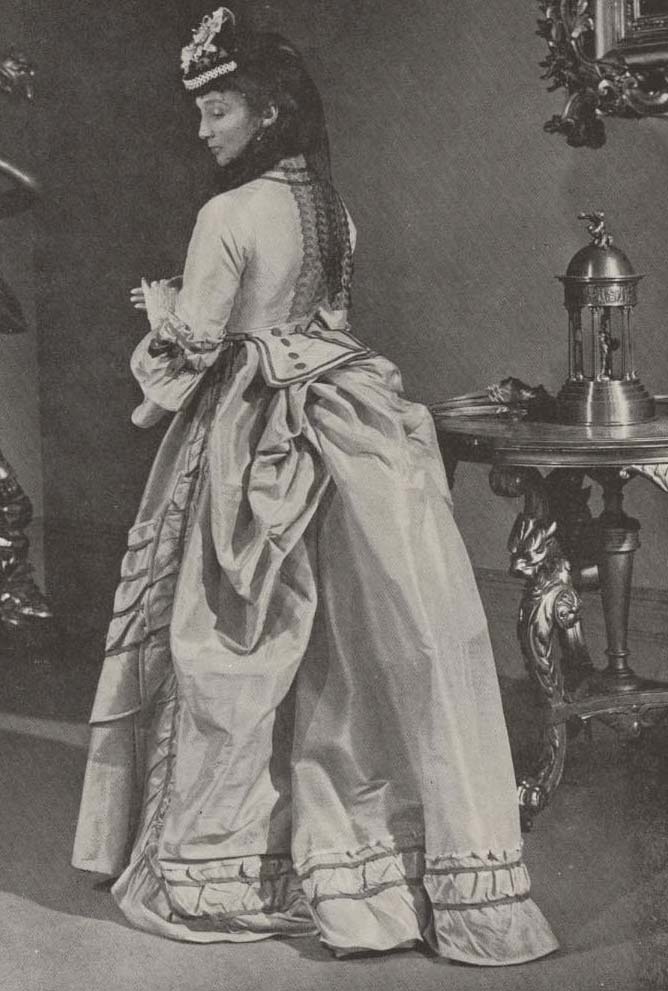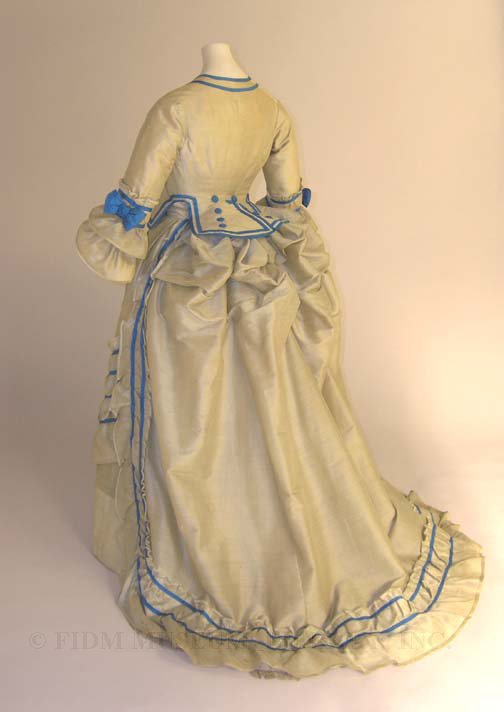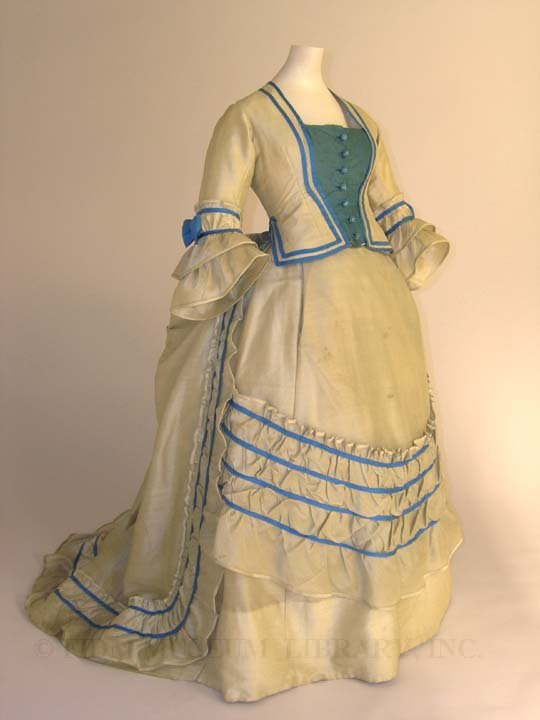Dress form, mannequin or floating form?
Regular readers of this blog have probably noticed the variety of forms we use to display objects from the FIDM Museum collection. When we photograph an object for in-house documentary purposes, it's usually dressed on a headless dress form or mannequin. For exhibition and/or publication, we go all out, pairing garments with contemporaneous accessories (shoes, hat, jewelry, etc.) in an effort to present the garment as it might have been seen in its own era. The paper wigs worn by some of our mannequins are another aspect of this contextualization. More recently, we've used floating forms to display garments during exhibitions. The decision regarding which type of display to utilize is the result of a complicated equation involving time, resources, space, staff, garment condition and intended usage of the final image or dressed mannequin. Notice that there is one possible, maybe even logical, way of exhibiting and presenting garments not mentioned--dressing them on a living human form. Within the museum context, garments are never worn because it could easily cause permanent damage, especially to older, fragile and possibly irreplaceable objects. Though it could be argued that separating a garment from the body, its animating foundation, lessens our ability to appreciate and understand the garment, the risk of damage is too great. This intentional separation highlights a common critique of museum fashion exhibitions: the display of garments on static forms deadens or eliminates the informative tension between dress and the human form. Exhibiting Fashion, a blog about fashion and textile museums and collections, discusses this issue in a recent post inspired by this article. Though contemporary museums would not consider displaying garments on a living body an ethical method of museum exhibition, this wasn't always the case. In older fashion history exhibition catalogs and texts, you can sometimes find images of a real, live human dressed in historic garb. In retrospect, this probably wasn't the best choice for the garment, but it was once considered a valid method of documentation and display. Doris Langley Moore, founder of the Fashion Museum at Bath, England, believed that seeing garments on living models facilitated a deeper understanding of the fact "that fashion is largely a series of optical illusions," created through an almost magical combination of garment, undergarments and body.1 To this end, she wrote two books (The Woman in Fashion and The Child in Fashion) featuring garments from her extensive collection worn by such well-known figures as Vanessa Redgrave, Margot Fonteyn and Vivien Leigh. The image below showcases an 1871-73 day dress as worn by British actress Googie Withers in The Woman in Fashion.
 From Doris Langley Moore, The Woman in Fashion London: B.T. Batsford Ltd., 1949: 85. In 2001, this exact day dress was donated to the FIDM Museum as part of a large donation from the Helen Larson Estate. We photographed it from the same angle as it was seen in The Woman in Fashion. The stiff textile, a wool/silk blend, and interior tapes create the bustle effect. In her book, Doris Langley Moore called the bright blue piping "kingfisher blue."
From Doris Langley Moore, The Woman in Fashion London: B.T. Batsford Ltd., 1949: 85. In 2001, this exact day dress was donated to the FIDM Museum as part of a large donation from the Helen Larson Estate. We photographed it from the same angle as it was seen in The Woman in Fashion. The stiff textile, a wool/silk blend, and interior tapes create the bustle effect. In her book, Doris Langley Moore called the bright blue piping "kingfisher blue."

Day dress 1871-73 Gift of the Helen Larson Estate 2001.31.12AB
At least one museum, the V&A, has tried to bridge the gap between static and fluid forms of fashion exhibition. Their regular Fashion in Motion events present contemporary fashion in live presentations within their galleries. The garments shown during Fashion in Motion events, however, are not a part of the accessioned collection at the V&A but are provided by the featured designer. Having never had the good fortune to attend one of these events, it's difficult to know how these events work. Do the "live" garments override the aura of the garments on exhibition? Or do they play off each other, forcing a new understanding of each garment? Readers, what are your preferences regarding fashion exhibitions? Do you like the suggestion of life provided by a mannequin with features, including hair? Or do you prefer the blank neutrality of a headless or floating form? 1 Moore, Doris Langley. The Woman in Fashion London: B.T. Batsford, Inc.: 85.
